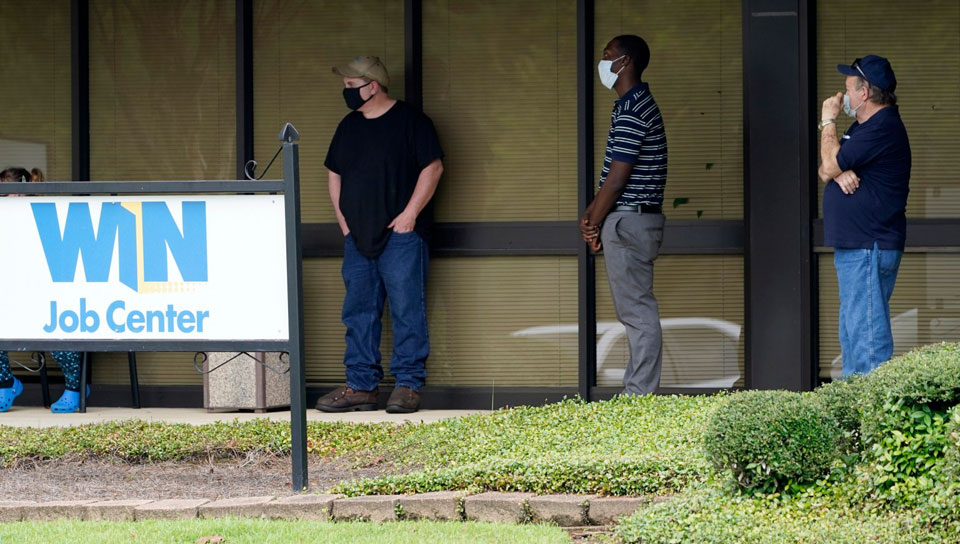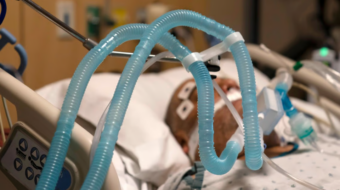
WASHINGTON—Almost 19 million workers got state or federal jobless benefits through March 6, the Bureau of Labor Statistics reported. But that figure doesn’t count almost two million more who have applied for the aid in the two weeks since then.
The numbers—a total of 20,892,784 workers seeking or getting the aid—show the U.S. is still suffering the hangover of the coronavirus-caused economic depression that began just over a year ago. The figure is equivalent to one of every seven workers.
But in a piece of good news, the number of people seeking weekly federal or state aid fell below 900,000 in the week ending March 20. That’s the first time it’s been below one million since the economy tanked as measures to curb the virus by closing businesses took hold. Aid seekers numbered 1.04 million just a week before. Some 18.95 million already get it.
And BLS also reported the $300 weekly federal unemployment checks, from two separate pots of cash, went to almost 13.3 million of the jobless workers.
Among them: Unionized musicians who lost gigs as venues closed, home health care workers, gig economy workers, and “independent contractors,” such as port truckers, who can’t seek or get state jobless benefits.
Democratic President Joe Biden touted that aid as he, Vice President Kamala Harris, and their spouses traveled the U.S. in the last week to make the case for the Biden-drafted American Rescue Act, which Congress approved on party-line votes.
That’s because, without the rescue legislation, the federal benefits would have halted on March 11. But lawmakers extended them only through just after Labor Day—something Biden hasn’t mentioned yet.
Economic Policy Institute Policy Director Heidi Shierholz, the Labor Department’s top economist during the Obama-Biden administration, did.
“One year ago this week, when the first sky-high unemployment insurance claims data of the pandemic were released, I said, ‘I have been a labor economist for a very long time, but I have never seen anything like this.’ But in the weeks that followed, things got worse before they got better—and we are not out of the woods yet.”
Biden’s $1.9 trillion rescue act is “both providing crucial support to millions of working families and setting the stage for a robust recovery,” Shierholz explained.
“One big concern, however, is the bill’s unemployment insurance provisions”—those $300 weekly checks–are set to expire the first week in September, when, even in the best-case scenario, they will still be needed. By then, Congress needs to have put in place long-run reforms that include automatic triggers” for benefits “based on economic conditions.”










